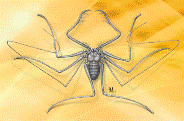Papers in the Biological Sciences

Eileen Hebets Publications
Document Type
Article
Date of this Version
2014
Citation
Published in Behaviour 151 (2014), pp 573–590. doi 10.1163/1568539X-00003149
Abstract
Males of the wolf spider, Rabidosa punctulata, exhibit condition-dependent alternative mating tactics, whereby small, poor condition males engage in multimodal courtship while large, good condition males adopt a direct mount tactic that forgoes courtship. This study explores the possibility that tactic-specific costs can help explain this unintuitive pattern of mating tactic expression. Specifically, we hypothesize that courtship signaling is costly with respect to eavesdropping by predators and that males can alter their tactic expression based upon the perceived environmental predation risk. We test this by first examining the risk of predation associated with different mating tactics. We use a co-occurring predatory heterospecific, R. rabida as our predator. We found support for the prediction that courting R. punctulata males tended to be attacked more often than non-courting males, and the likelihood of being attacked was best predicted by courtship activity. Given this documented cost, we hypothesized that R. punctulata males would adjust their mating tactic based upon perceived predation risk. In a second experiment, we manipulated perceived predation risk by providing R. punctulata males with different female silk cues (conspecific; predatory heterospecific; conspecific + predatory heterospecific) and examined mating tactic expression. In support of our hypothesis, males were more likely to adopt the direct mount tactic in the presence of predatory heterospecific or mixed silk cues and were more likely to court in the presence of conspecific cues. These results support the hypothesis that the cost of predation from eavesdroppers may influence the evolution and expression of male alternative mating tactics in R. punctulata.
Included in
Animal Sciences Commons, Behavior and Ethology Commons, Biology Commons, Entomology Commons, Genetics and Genomics Commons


Comments
Copyright © 2014 Koninklijke Brill NV, Leiden. Used by permission.